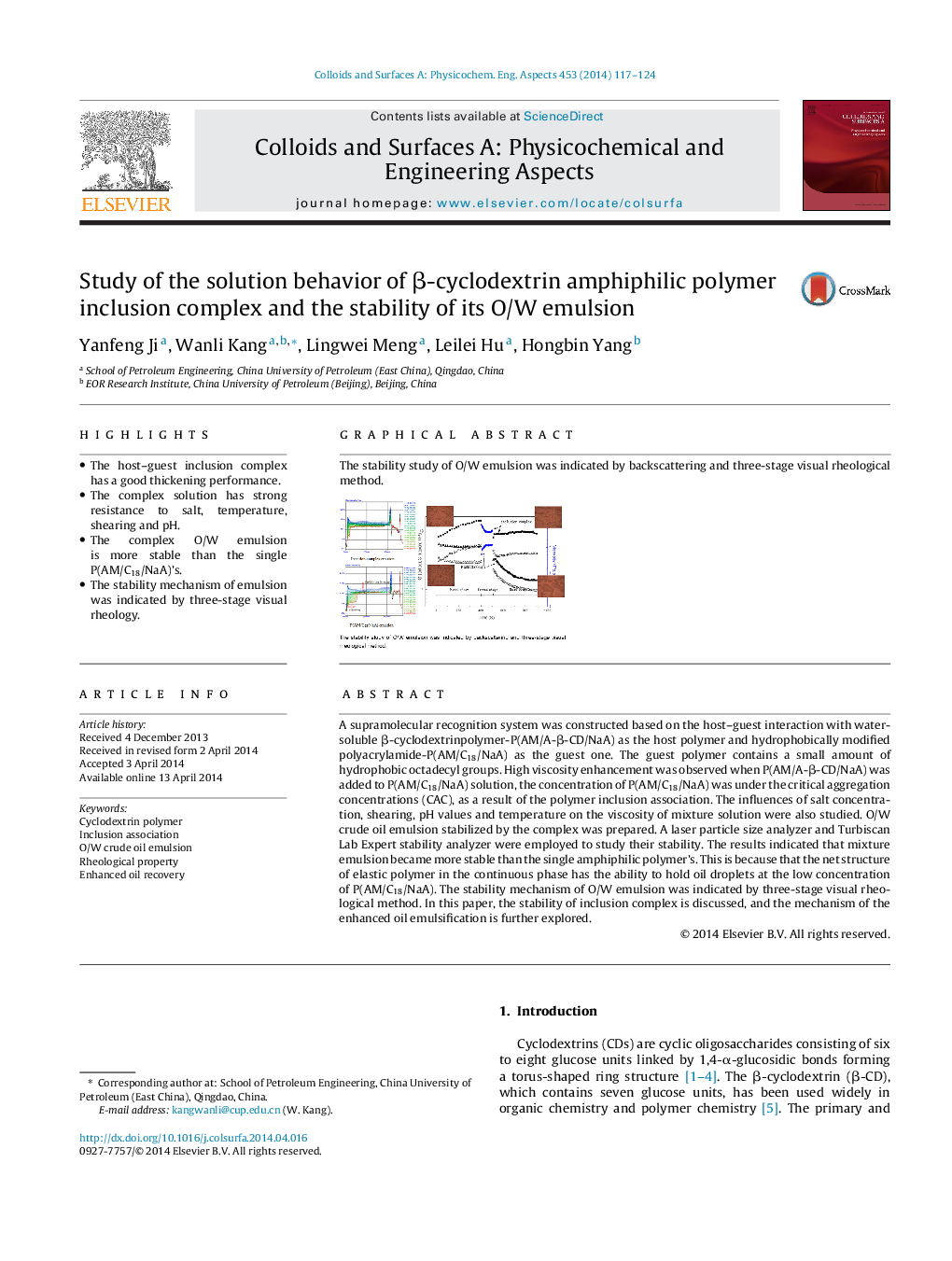| Article ID | Journal | Published Year | Pages | File Type |
|---|---|---|---|---|
| 592716 | Colloids and Surfaces A: Physicochemical and Engineering Aspects | 2014 | 8 Pages |
•The host–guest inclusion complex has a good thickening performance.•The complex solution has strong resistance to salt, temperature, shearing and pH.•The complex O/W emulsion is more stable than the single P(AM/C18/NaA)’s.•The stability mechanism of emulsion was indicated by three-stage visual rheology.
A supramolecular recognition system was constructed based on the host–guest interaction with water-soluble β-cyclodextrinpolymer-P(AM/A-β-CD/NaA) as the host polymer and hydrophobically modified polyacrylamide-P(AM/C18/NaA) as the guest one. The guest polymer contains a small amount of hydrophobic octadecyl groups. High viscosity enhancement was observed when P(AM/A-β-CD/NaA) was added to P(AM/C18/NaA) solution, the concentration of P(AM/C18/NaA) was under the critical aggregation concentrations (CAC), as a result of the polymer inclusion association. The influences of salt concentration, shearing, pH values and temperature on the viscosity of mixture solution were also studied. O/W crude oil emulsion stabilized by the complex was prepared. A laser particle size analyzer and Turbiscan Lab Expert stability analyzer were employed to study their stability. The results indicated that mixture emulsion became more stable than the single amphiphilic polymer's. This is because that the net structure of elastic polymer in the continuous phase has the ability to hold oil droplets at the low concentration of P(AM/C18/NaA). The stability mechanism of O/W emulsion was indicated by three-stage visual rheological method. In this paper, the stability of inclusion complex is discussed, and the mechanism of the enhanced oil emulsification is further explored.
Graphical abstractThe stability study of O/W emulsion was indicated by backscattering and three-stage visual rheological method.Figure optionsDownload full-size imageDownload as PowerPoint slide
